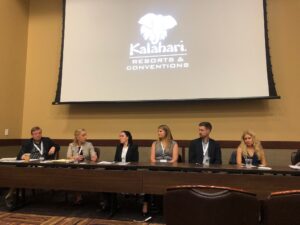The PIOGA Press
(by Lisa Bruderly and Gary Steinbauer)
Despite a recent federal rulemaking on the definition of “waters of the United States” (WOTUS) and the anticipated U.S. Supreme Court matter, County of Maui v. Hawai’i Wildlife Fund, the scope of the federal government’s authority under the Clean Water Act (CWA) could remain in flux.
Even before its publication in the Federal Register, opponents of the WOTUS rulemaking vowed to file legal challenges. Furthermore, a recently announced settlement in the County of Maui case could prevent the Supreme Court from deciding whether point source discharges that travel through groundwater before reaching a jurisdictional surface water are regulated by the CWA. The threatened legal action on the WOTUS rulemaking and the announced settlement in County of Maui could prevent regulated parties from receiving much needed clarity on key jurisdictional issues under the CWA.
WOTUS final repeal rule and new definition
Step 1. On September 12, the U.S. Environmental Protection Agency (EPA) and the Army Corps of Engineers released a pre-publication version of a final rule repealing the Obama administration’s 2015 rule redefining WOTUS under the CWA, typically referred to as the “Clean Water Rule” (CWR). The repeal rule becomes effective 60 days after publication in the Federal Register, which had not yet occurred as of October 7. Major national environmental groups and states have already
vowed to challenge the rulemaking.
The final repeal rule could end the existing regulatory patchwork where the CWR’s definition currently is in place in 22 states (including Pennsylvania) and the pre-2015 definition of WOTUS is in effect in 27 states and recodify the pre-2015 definition of WOTUS consistently across the United States. …

 Justine M. Kasznica
Justine M. Kasznica